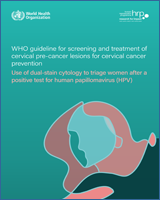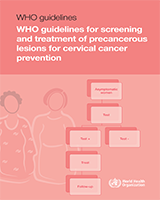Guideline dissemination
These guidelines will be available online at the WHO Library database and there will be a link on WHO's Sexual and Reproductive Health web page and in the WHO Reproductive Health Library (RHL), an electronic review journal.7 The publication will also be announced in the UNDP/UNFPA/UNICEF/WHO/World Bank Special Programme of Research, Development and Research Training in Human Reproduction (HRP) WHO Reproductive Health Update,8 which reaches more than 2000 subscribers and numerous organizations with whom we are working. Many of these organizations will also copy the announcement in their newsletters.
The guidelines will be distributed in print to subscribers to WHO publications, to the WHO mailing list for mandatory free distribution (national chief health executives, ministers of health or director-generals of health, depository libraries for WHO publications, WHO representatives/liaison officers, WHO/HQ library, WHO regional offices, and off-site office libraries), additional non-mandatory free recipients (competent national authorities for sexual and reproductive health, cancer control programmes, national research centres in reproductive health, and WHO collaborating centres), WHO staff at headquarters, regional and country offices and elsewhere, concerned NGOs, medical societies concerned with cancer control and/or sexual and reproductive health, scientific journals (including general medical journals and journals specialized on sexual and reproductive health or cancer), international organizations, and donors, potential donors, potential publishers of translated versions, as well as all those who contributed to the documents.
Conference invitations to discuss and present the guidelines will be accepted.
Regional conferences are already planned in the Americas and Africa to present the new recommendations to a number of stakeholders involved in national programme planning in 2013. The other regions will be covered in 2014.
If requested by regional offices, countries will be supported to adapt the guideline to their country-specific needs and to integrate the material with existing national guidelines. Adaptation will be done by organizing regional, sub-regional and country-level workshops for discussion of each recommendation, in order to adapt them to the national epidemiologic, cultural, and socioeconomic context.
Initially, the guidelines will be available in English only and translations will be developed subject to the availability of funding. Translation into non-UN languages and publication in these languages by third parties will be encouraged.
Guideline evaluation
The number of downloads from the WHO web sites (headquarters and regional) will be used as an indicator of interest in these guidelines.
We are working with the WHO regional offices to monitor requests from countries for technical assistance to use these guidelines. For this purpose, national stakeholder meetings will be organized in-country, and feedback on the clarity, feasibility, and usefulness of the recommendations will be recorded.
We will also monitor, with the regional offices, how many countries change their recommendations based on the publication of these new recommendations for screen-and-treat strategies.
Guideline update
The GDG will continue to work with WHO in an ad hoc manner, so that the research gaps identified during the process can be addressed. In addition, evidence published on new screening and treatment methods will be monitored so that updates to these recommendations can be considered promptly. We anticipate that around five years after the publication of these recommendations sufficient new evidence will be available to update the present recommendations and potentially add new ones.


